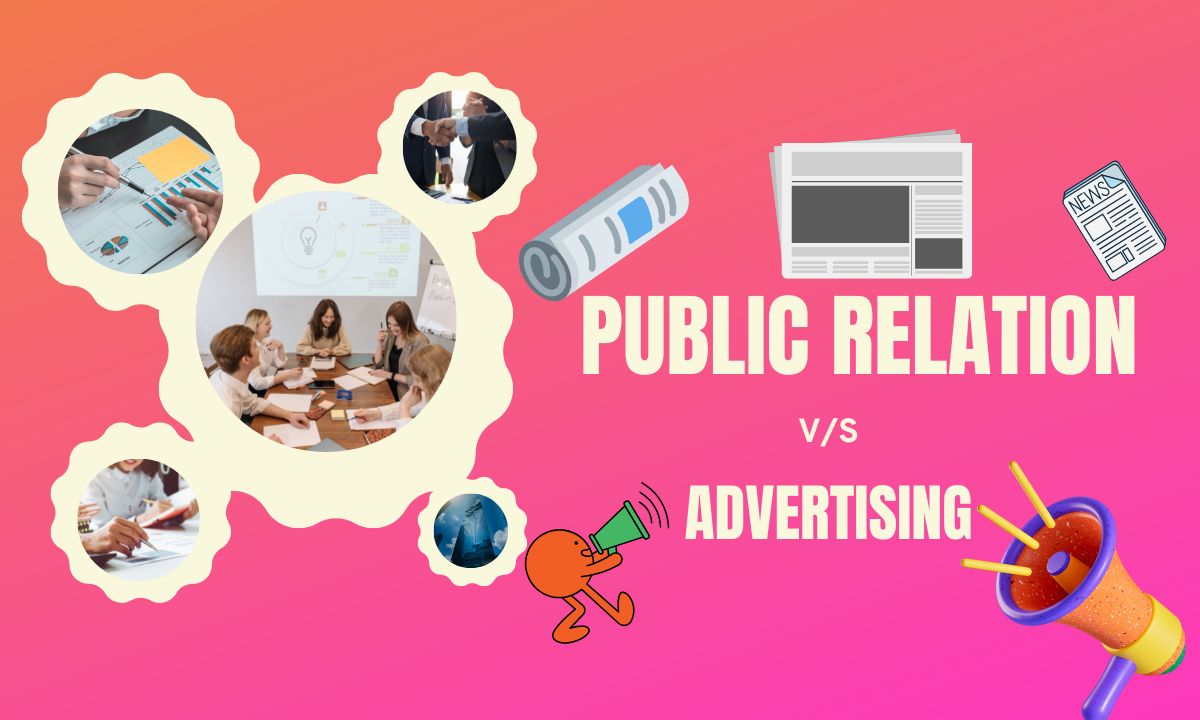Most people assume that public relations and advertising are essentially the same when they hear about them.
In actuality, there is a significant distinction between them.
The misconception may be caused by the fact that both of them involve information about a person or brand that is found in the media, making them both a branch of marketing. The only similarity, though, is this one.
Advertising is controlled media, which is the most apparent distinction between them.
Prior to paying the media to promote the campaign, the corporation develops the campaign and its supporting materials.
Since PR develops a campaign and communicates the information with media outlets, it is far less tightly controlled.
These frequently include writers for the media, bloggers, and industry influencers. What the recipient does with the information the PR agency has given them is up to them.
What Separates Public Relations from Advertising?
Public Relation and advertising both aid in the growth of brands and audience interaction. The main difference between the two is that while advertising space is reimbursed, news releases and pitches to the media are how public relations outcomes are accomplished. For instance, you can submit a story idea to a news outlet, but you have to pay for online banner advertising space. The term “owned” media also refers to the written or graphic content you create for your website or for social media.
Let’s now move into the details and examine some of the other aspects that make these two marketing strategies significantly different from one another:
Target:
Public Relation professionals are attempting to cast a wider net while businesses and organizations focus their advertising efforts on potential customers. PR targets both internal and external audiences. They could be people like workers, investors, clients, members of the press, lawmakers, and many more. Influencers are a new category that describes persons with a lot of personal connections, such as celebrities or politicians, or who have a sizable online following.
Goals and objectives:
Public relations contributes to increasing brand recognition and reputation. Consumers are more inclined to trust and do business with a firm they know and respect, which is one of the main aims and objectives of a good PR campaign. To increase sales, advertisements are created for a certain target market. Instead of cultivating a reputation, they frequently place a greater emphasis on advertising a good or service.
Control:
When you purchase an advertisement, you have complete control over the advertisement’s appearance, message, placement, and timing. How much money you have to spend will determine how much exposure your advertisement gets. But in case of PR the control totally depends on the media outlets. Your information’s presentation in the news and whether it is even covered are decided by the media.
Strategy:

Advertising strategy has a short-term objective in mind. Ad content is used to target particular buying seasons (like the holiday shopping season), push a new product, or advertise special offers to increase sales. In order to create a loyal and devoted community of “brand fans” that includes customers and other stakeholders, PR experts are constantly considering the big picture and providing insightful information about their brand.
Credibility:
Consumers do not always believe what they are told in advertisements. Why? Because whoever is funding the advertisement is dictating all that it says. Even if that might be true, they won’t declare “our product is likely to break within a year.” PR allows for the dissemination of communications by the media, a dependable source that is far more reliable.
As of now, the distinctions between advertising and public relations are rather clear-cut and straightforward to comprehend, but social media’s rising popularity has begun to muddy the waters. Why? because there are many ways to use social media.
We’ll concentrate on Facebook. Your company created and maintains your Facebook account. It is practically free unless you hire someone to administer your page. Facebook may be used for both paid advertising and public relations campaigns, though. Paying to “boost” your article is regarded as advertising. Your audience is more likely to see your posts if they are promoted because they show up higher in the news feed. You can make the content available to audiences besides simply your fans. On the other hand, you might post a fantastic image of your new brand’s adorable puppy mascot and receive a tonne of complimentary likes, comments, and shares.
Technique:
The most effective technique to advertise a company is to combine and coordinate both public relations and advertising into your marketing strategy. By utilizing both platforms, you may increase the frequency and channels through which your target audience receives your important brand messaging. A marketing message must be presented to people several times before to have a recall value of their messaging.
Public Relation | PR Media House | Best Public Relations Firms
